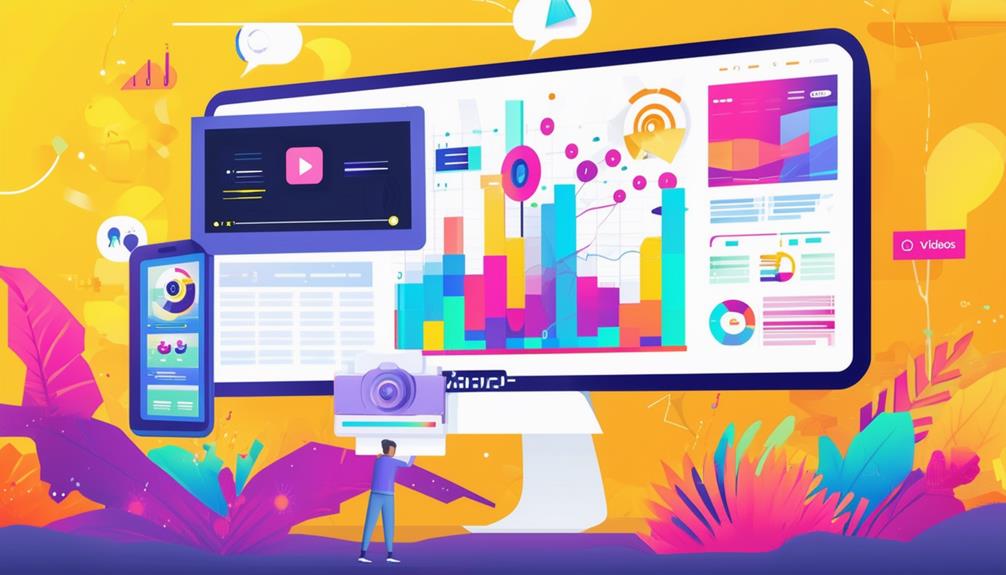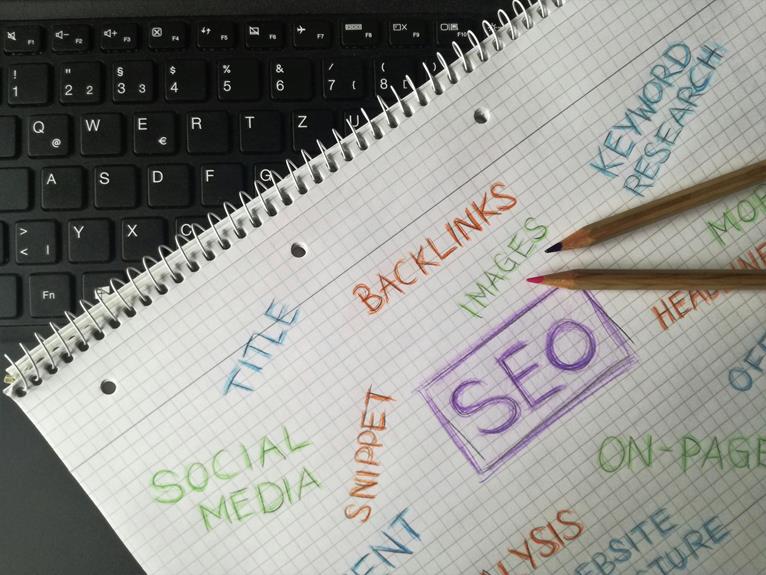When you consider the evolving landscape of SEO in 2023, on-page strategies are more critical than ever. You should think about how optimizing keyword placement in your titles and URLs can significantly impact your site's visibility. Enhancing your meta tags and structuring content with clear headers are essential tactics that align with search engine algorithms. Incorporating internal links and multimedia elements like videos can also enhance user engagement. So, how do these strategies come together to elevate your online presence? Let's explore how these techniques can transform your SEO game.
Optimize Keyword Placement
Effective keyword placement is the backbone of successful on-page SEO. You need to strategically position your keywords to improve search engine visibility and drive more traffic. Start by placing your primary keyword in the title tag, as it's a critical ranking factor.
Ensure it appears naturally within the first 100 words of your content to signal relevance to search engines. Use data-driven techniques to identify secondary keywords and incorporate them throughout your headings and subheadings. This helps diversify your content and matches a wider array of search queries.
Remember, keyword density matters, but don't overstuff. Aim for a keyword density of around 1-2% to maintain readability while satisfying search algorithms. Incorporate keywords in your URL and image alt texts as well. This not only helps with SEO but also improves user experience by offering context.
Analyze competitors' pages using tools like SEMrush or Ahrefs to gather insights on optimal keyword usage and adjust your strategy accordingly. By placing your keywords thoughtfully, you're not just improving your ranking potential but also ensuring your content remains relevant and engaging for your audience.
Enhance Meta Tags
How can you make your content stand out in search results? Enhancing meta tags is a powerful strategy you can't afford to overlook.
Start by crafting compelling meta titles. They should be concise yet packed with primary keywords that mirror users' search intent. Aim for around 60 characters to ensure they display fully on search engine results pages (SERPs).
Next, focus on meta descriptions. Although they're not a direct ranking factor, well-written descriptions can boost click-through rates (CTR). Include secondary keywords and a clear call-to-action (CTA) to entice users to click. Keep them between 150-160 characters for optimal visibility.
Data-driven insights show that pages with optimized meta tags tend to perform better in search rankings. Tools like Google Search Console can provide valuable data on how your meta tags are impacting your site's performance.
Analyze metrics such as impressions and CTR to refine your approach continuously.
Structure Content With Headers

Organize your content with headers to improve both user experience and SEO performance. Headers break down your text into digestible sections, making it easy for readers to skim through and find the information they need. Use H1 for your main title, followed by H2 for subheadings, and H3 for further subsections. This hierarchy helps search engines understand your content's structure, boosting your rankings.
Data shows that well-structured content can increase your page's time-on-site metrics and reduce bounce rates. Headers also allow you to strategically place keywords, enhancing your content's relevance. Ensure your headers are descriptive and contain target keywords without keyword stuffing.
Here's a simple table to guide your header usage:
| Header Level | Purpose | Example |
|---|---|---|
| H1 | Main Title | "Ultimate Guide to SEO" |
| H2 | Section Titles | "Benefits of Using Headers" |
| H3 | Subsection Titles | "How Headers Improve SEO" |
| H4 | Detailed Points | "Technical Header Tips" |
Improve Internal Linking
To boost your website's SEO and user engagement, enhancing your internal linking strategy is crucial. Internal links guide users through your site, improving navigation and helping search engines understand your content's structure.
Start by identifying relevant anchor text that naturally fits within your content, as this helps users and search engines grasp the context and relevance of linked pages.
Data-driven insights suggest that a well-planned internal linking structure can increase page views by up to 40% and reduce bounce rates significantly. Prioritize linking to important pages, such as cornerstone content, which provides a comprehensive overview of key topics. This not only enhances user experience but also signals to search engines which pages are most valuable.
Ensure your internal links are functional and update them regularly to keep pace with evolving content. Use tools like Google Analytics to track user flow and identify which pages need better linking.
Avoid overloading any single page with too many links, as this can dilute the SEO value. By strategically improving your internal linking, you'll enhance your site's SEO performance and provide a seamless user journey, fostering engagement and retention.
Utilize Multimedia Elements

Frequently, enhancing your content with multimedia elements can significantly boost user engagement and improve your SEO performance. Users are more likely to stay longer on a page when you incorporate videos, images, and infographics, reducing bounce rates and increasing time-on-page metrics.
Google's algorithms recognize this enhanced user engagement and reward it by improving your search rankings.
You should strategically place relevant images with alt text to optimize for image search results. Alt text not only helps with accessibility but also acts as another opportunity to use keywords effectively, enhancing your content's visibility.
Videos are equally powerful; studies show that pages with video content are 53 times more likely to rank on the first page of Google. Make sure your videos are high-quality and relevant, providing additional value to your users.
Don't overlook infographics, which can simplify complex data and boost social sharing. Infographics are three times more likely to be shared than any other content type.


Leave a Reply